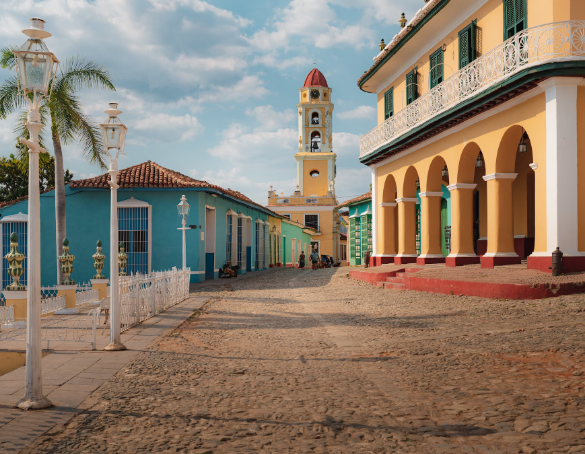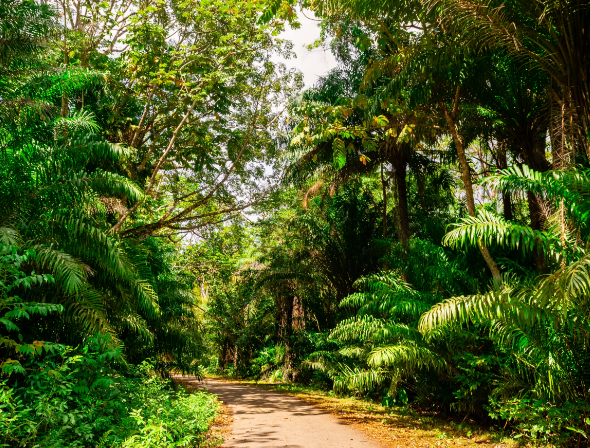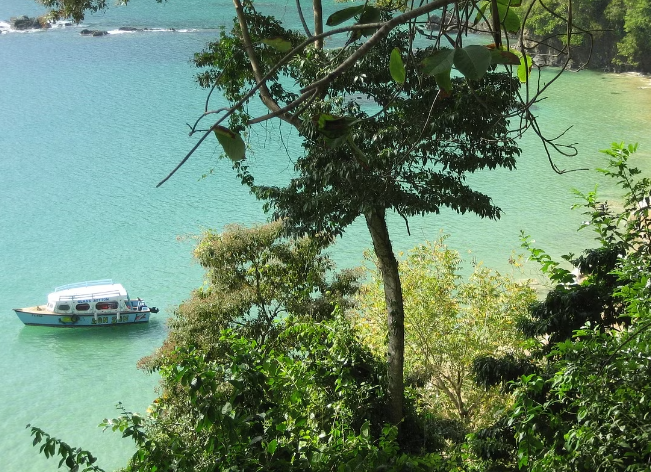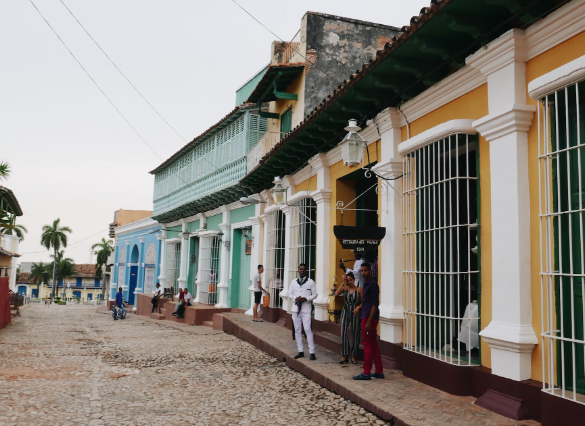Welcome to the vibrant, culturally rich island of Trinidad, nestled in the sparkling Caribbean Sea near Venezuela. The twin-island nation of Trinidad and Tobago, with its Creole traditions and mouth-watering cuisine, entices adventurous souls on unforgettable journeys. Immerse yourself in the lively capital Port of Spain, where a carnival filled with Calipso and Soka music awaits you. For nature lovers, explore the stunning Asa Wright Nature Centre, a sanctuary home to many bird species.

Don’t forget to visit the charming Tobago Main Ridge Forest Reserve, home to vibrant hummingbirds and sunny beaches. Covering an area of 4,768 square kilometers, Trinidad is home to a wide variety of natural wonders, from the scenic Northern, Central, and Southern Mountains to the tranquil Caroni and Nariwa Marshes. In addition to its scenic destinations scattered throughout the Caribbean, Trinidad is also a sight that everyone should visit.
Whether you’re visiting Trinidad for the first time or want to see the island from a new perspective, this tropical paradise will be filled with sunshine, fun, and memories for the whole group. Get ready to discover the magic of this beautiful Caribbean gem with this detailed travel guide.
Savannah Queen’s Park
One attraction in Trinidad is Queen’s Park in Savannah, also known as Port of Spain’s largest open space. Here, visitors to the Caribbean islands can wander through the lush landscape, wandering through nearly 260 acres of flat land.
The circumference of the park is about 2.2 miles, so it should be a fairly easy adventure for visitors of all skills and ages.
Fort King George
King George is known as one of Trinidad’s best-preserved historical sites, with many vestiges of the island’s past. Here, one can see the remains of meticulously restored, including officers’ barracks, powder magazines, cells, and bell-shaped tanks.
Fort George was built in 1804 by former British Governor General Sir Thomas Heslop to protect Port of Spain from military threats. This is undoubtedly a unique sight on the island.
Argyle Falls
Trinidad’s next attraction is Argyle Falls, a famous waterfall that falls from a three-level drop of 54m into a series of pools surrounded by jungle. This is one of the most adventurous tours on the island, taking visitors into the surrounding jungle.

Argyle Falls is a great place to cool off during the warmer months, as there is an 18-foot-deep lagoon for locals and tourists alike to swim in.
Maracas Beach
For those who want to relax on the beach while in Trinidad, Malacas Beach has plenty of opportunities to relax. Here, visitors can experience the bays and sandy beaches at the northern tip of the island.
Visitors need to drive along North Coast Road for about an hour, crossing mountain routes.
Asabright Nature Centre & Hostel
If anyone wants to experience the local wildlife and travel back in time, a visit to the Asabright Nature Center and Lodge would be a fun day trip. At the centre, guests can see the nature resorts and scientific research stations of the Arima Valley in the northern mountains of Trinidad and Tobago.
If someone wants to be surrounded by animals and have ample learning opportunities, then this is a great place to stay.
Royal Botanic Gardens
One of the most relaxing things to do in Trinidad is to explore the Royal Botanic Gardens. Located in Port of Spain, Trinidad and Tobago, this is the largest seed preservation project in the world.
With 500 acres of woodland, Trinidad’s Royal Botanic Gardens is one of the best attractions in the Caribbean. Nature and humanity blend here, and it’s nice to spend a holiday in a paradise.

Tobago Main Ridge Forest Reserve
Another natural attraction to visit in Trinidad is located at 79FM+G65, Mason Hall, Trinidad & Tobago, with plenty of local flora and fauna for the whole group to see. The Tobago Main Ridge Forest Reserve is the oldest legally protected forest reserve dedicated to conservation purposes.
Established in 1776, the reserve has been protected and cherished by the island’s people for centuries.
Caroni Swamp
Caroni Swamp. Here, island guests can explore Trinidad and Tobago’s largest mangrove wetland. Located on the west coast of Trinidad, south of Port of Spain, this attraction shouldn’t be too far by car for those living in town.
Best Time to Visit Trinidad
The hurricane season in the Caribbean runs from June 6 to November 1. Generally, the best time to visit Trinidad and Tobago is from January to May, when the skies are clear. Since this tropical island experiences hurricane season every summer, one may want to avoid the island between June 11 and November 30.
However, the Caribbean tends to be less crowded in summer resorts, which may appeal to some travelers who want a quiet trip.
Of course, this is not to say that hurricanes occur every year, but vigilance is needed. Hotels, flights, attractions, and dining during summer/fall may be cheaper due to the possibility of storms.
If you have travel insurance, it is recommended to purchase it when traveling to Trinidad/Caribbean between June and November.

Flights to the Caribbean will be cheaper in the summer, so this could be a good time to travel. However, make sure and check the weather for the possibility of a storm as it is hurricane season on the islands.
Tips for Visiting Trinidad
For people living in Trinidad and Tobago, there are a few things to keep in mind. First, despite Trinidad’s overall safe place to visit, visitors to Trinidad are still warned not to wear or carry valuable jewelry on the island. In general, it is best to avoid wearing anything that is too flashy, as this will attract the attention of thieves.
Secondly, travelers should make sure to lock their car doors when they are on the island, as vehicle theft is common. Especially when renting a car, tourists need to lock the vehicle, store valuables out of sight, and monitor the vehicle throughout the day.
While relatively safe overall, Trinidad officials strongly recommend keeping valuables out of public view and locking the doors of cars, hotels, etc. This can protect travelers from potential booms that may focus on densely populated hotspots.
Another tip for a stop in Trinidad is to use the official travel guide. There will be scammers trying to sell adventure activities to cautious visitors on the island, which is considered unsafe. Through the hotel’s agency, or by calling the island’s official tour company.
